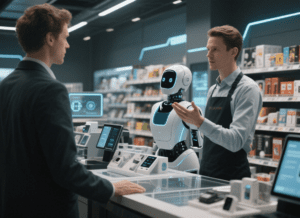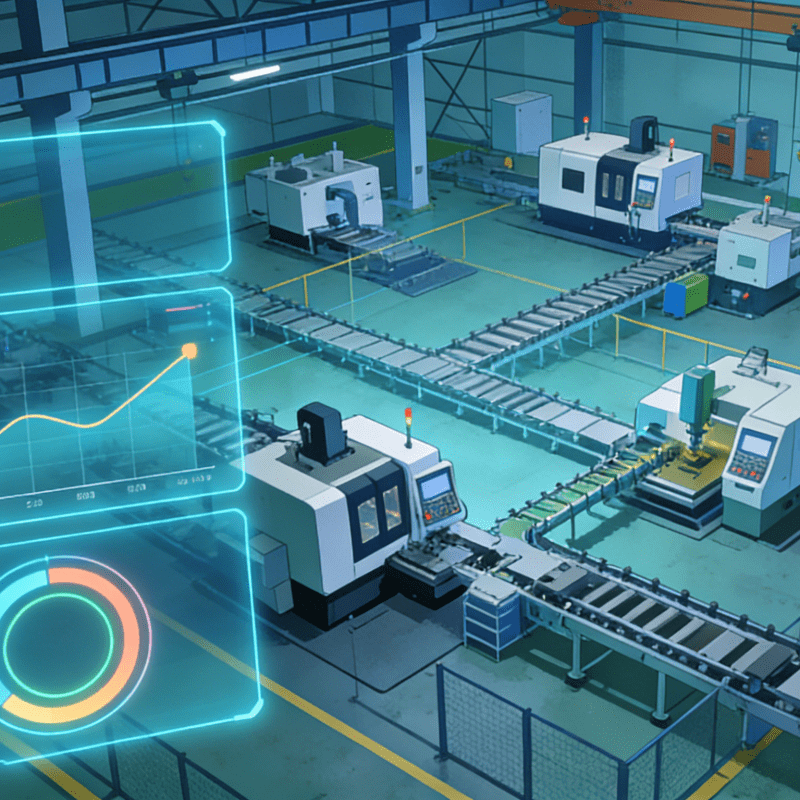Walk into a store today, and you might still see shelf stockers and cashiers—but behind the scenes, a quiet revolution is underway. For decades, retail’s playbook revolved around physical presence: prime real estate, friendly sales teams, and eye-catching displays. Then e-commerce rewrote the rules, shifting power to online search and social media. Now, artificial intelligence is doing something more radical: it’s not just changing how we shop, but who we shop with—turning everyday consumers into AI-powered decision-makers, and redefining what it means to “win” in retail.
Retailers once relied on shelf space and sales associates to win over customers. Then came e-commerce, search-engine optimization and hyper-targeted social marketing. Now, another shift is underway, one that could prove even more transformative: the rise of the AI-powered consumer.
But, according to a comprehensive study by information technology giant Cognizant, which surveyed more than 8,000 consumers globally to better understand how artificial intelligence is changing buyer behavior, this is not just a tech story, it’s a human one.
“We call it the AI revolution, the cognitive evolution,” Sushant Warikoo, senior vice president and business unit head of retail at Cognizant, told Newsweek, adding that AI is enabling “a completely new experience architecture—an opportunity to redesign business models and redesign experiences.”
One of the most striking findings in Cognizant’s research, Warikoo told Newsweek, is that more than three-quarters of consumers expressed frustration with the current buying process. That frustration, whether caused by search fatigue, decision paralysis or delivery delays, represents both a threat and an opportunity.
One of AI’s biggest appeals to consumers, their research found, is that it saves time by helping curb search overload and the all-too-familiar decision paralysis that often plagues the shopping experience. Cognizant believes AI-powered consumers could drive 55 percent of U.S. spending by 2030, a staggering $4.4 trillion, fundamentally reshaping the way people discover, compare and purchase products.
In the not-so-distant future, Warikoo says, every consumer may have their own AI agent, a personal concierge capable of filtering choices, sorting through deals and ensuring seamless deliveries. That shift will force retailers to engage not just with human shoppers, but with their digital gatekeepers.
Today, customer interactions are one-sided. Brands bombard consumers with marketing emails, notifications and text messages until they take action. Tomorrow, Warikoo says, customers will have AI agents acting as “intelligent firewalls,” filtering out the noise. “Brands will need to convince the agent before [they] ever reach the customer,” he continued.
Warikoo calls this the transition from UX, or user experience, to AX, an AI-powered experience that is always on, personalized and predictive. The firm’s data suggests this is no longer a theoretical concept.
Tools like Amazon’s “Buy for Me” and Google’s “Shop with AI” are already empowering consumer agents to make purchases automatically. “As the technology matures, it will become very simple. When they can just say, ‘Hey, could you order those groceries again?’ — that’s when it’ll click,” he said.
In Warikoo’s view, the AI revolution in retail will mirror what Airbnb did to hospitality or Uber did to transportation. It will reshape the customer journey from the ground up.
“This is not a study on how the technology works,” he said. “This is a study on how the technology changes the architecture of experiences. We’re trying to show that this is an Uber moment, an Airbnb moment, for almost every industry. The way people interact with businesses is changing.”
Some consumers are already living that future. They’re bypassing traditional product searches and letting AI assistants shop for them, issuing prompts and trusting the agent to make recommendations.
This transformation is being driven, in part, by companies like Amazon, Google and Walmart, which Warikoo says are investing heavily in both front-end AI agents and the large language models that power them. But success won’t hinge on software alone.
One of the biggest surprises from the study, Warikoo said, was that the appetite for AI varies widely, not just by age or industry, but also by where a buyer is in their journey.
To better understand these differences, Cognizant developed an AI Inclination Index, which measures consumer willingness to use AI tools, like chatbots or voice assistants, across different phases: learning, buying and using a product. The index revealed high-income shoppers, especially those earning more than $80,000 annually, were more open to using AI in every phase, particularly when making routine purchases.
And while younger consumers lean heavily into AI, older adults still have significant friction points and remain skeptical.
“What was interesting was that the appetite for leveraging AI is different based on age demographics,” he noted. “As you get to the 55 [and older] population, we saw a drop in the interest in using these types of tools.” However, as these agents and other AI tools improve, Warikoo believes adoption amongst older adults will increase.
While the tech is compelling, adopting AI alone isn’t enough. “It is of no use if it does not transform the business. If you’re not redesigning your business model, if you’re not changing the way the business works, it’s going to fail. That’s where Cognizant comes in. We are helping our clients answer the question — why are you doing things in the same way?” Warikoo said.
Retailers, Warikoo warns, have less than five years to adapt, and likely much less.
“This technology is moving very, very fast — exponential, right?” he said. He believes some of the smallest brands have the “opportunity to leapfrog the biggest because they’re more nimble, they don’t have legacy systems, they can move faster,” adding that companies have to rethink everything, from how products are discovered to how loyalty is created.
The retail landscape of 2030 won’t just be AI-enabled—it will be AI-negotiated. Consumers won’t just shop; they’ll delegate, and their AI agents will be the new gatekeepers of attention, trust, and spending. For retailers, this isn’t a choice to adopt AI—it’s a race to adapt to a world where the customer isn’t just a person, but a partnership between human and machine. Those who redesign their models to speak the language of these AI-powered shoppers won’t just survive—they’ll redefine what retail looks like next.





















